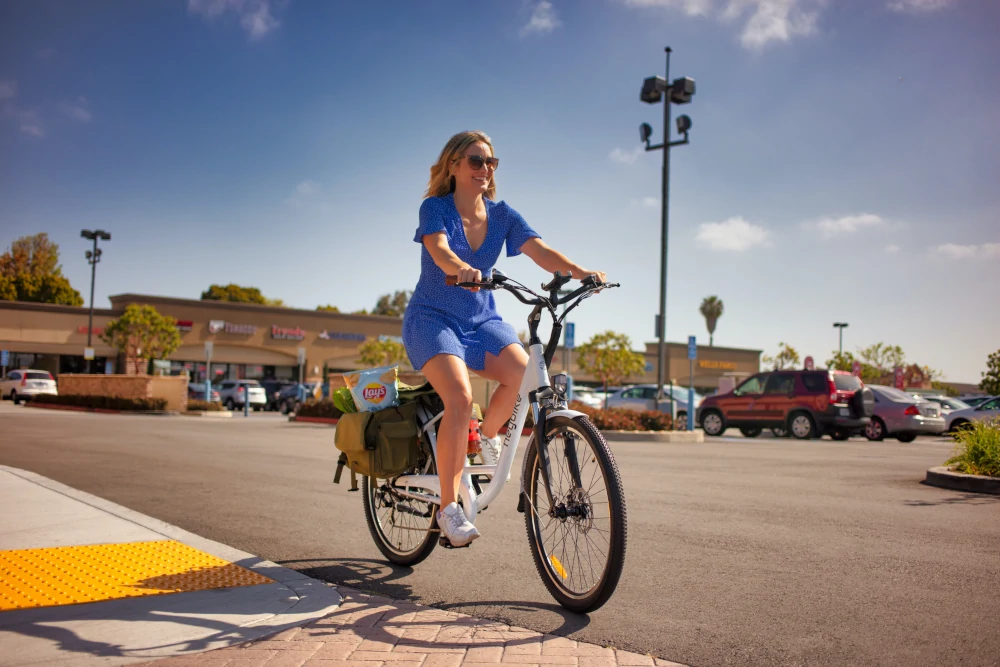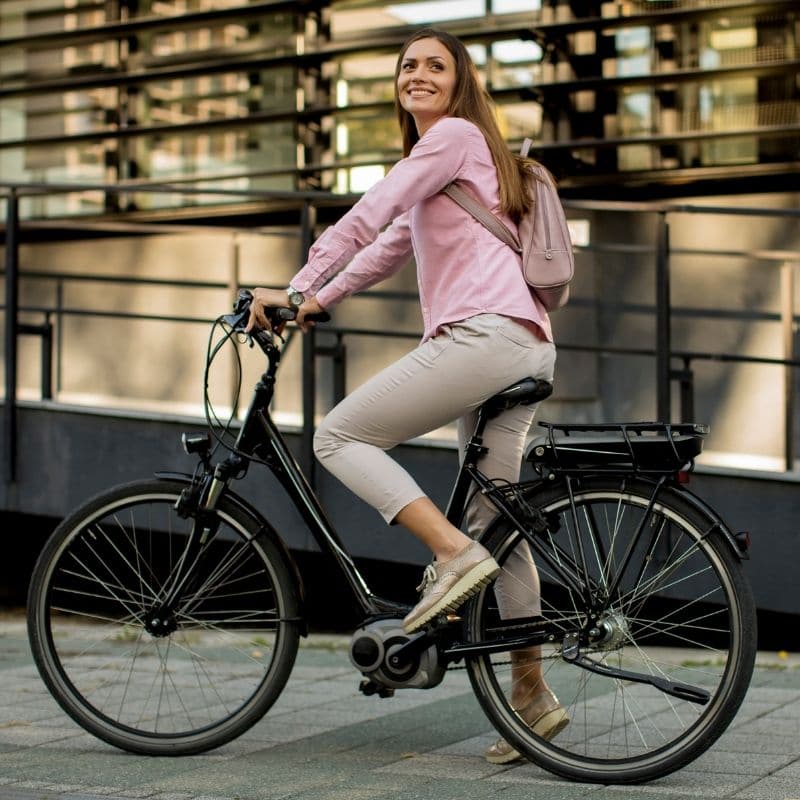In the past, women have been the more reluctant cyclists, and there are many reasons why cycle use by women falls far behind use by men. Could Ebikes be the big equalizer, and will we see more women, or at least an increase in percentage, of women using ebikes?
“Men are 2-3 times more likely to cycle than women; only 12 per cent of women cycle once a week.” [1]
The fact is, that less women ebike than men, and there are numerous reasons why this is so, despite the fact that ebikes are an enjoyable pastime and a great way to keep fit. Cycling is for all, or should be for all, so why aren’t women up there on a par with men?
Women cyclists are often subjected to harassment and intimidation. Women tend to be more concerned about the safety aspect of cycling, fearing the roads aren’t safe to cycle in, wary of thoughtless car drivers, especially in areas where there is poor infrastructure like safe cycling lanes.
Will More Women Use Ebikes?
The Rise of Women
Despite all the negatives though, in the UK, for example, since 2013, women cycling numbers are up by 723,000. [2]
The marked increase in popularity of the sport of cycling, and especially the success of female competitors, has no doubt given cycling a higher profile and led to more women taking up cycling.
In the US, the gender gap regarding cycling is closer:
“Of the 104 million people who rode a bike in 2014, 43% were women and about 57% were men.” [3]
Many of the concerns women have around cycling are not only to do with harassment and intimidation by males when out and about. Safe infrastructure is what women want, to enable them to go and cycle safely. Town and city planners will have to change priorities when upgrading transport infrastructure, especially now when there are so many environmental concerns surrounding climate change. It is simple arithmetic that safe cycling lanes lead to more cyclists, and correspondingly less traffic miles on the roads. Less traffic means a safer environment for cycling.
Ebike Facts
It is hard to find any definitive data, across the world, to suggest that the rise in ebike use as a percentage is any greater or less for women. It is true though that:
“The world’s e-bike market was worth a staggering $14,755 million in 2018. The annual growth between 2019-2024 is expected to be 6.39%.” [4]
Therefore, it would be safe to assume that, even if the gender percentages remain aligned, there will still be more women (just as there will be more men), using ebikes as time goes on.
The main three reasons given why bicycle owners don’t ride more, are due to hills, lengthy distances, and arriving at a destination drenched in sweat [5]. All of these reasons are mitigated and redundant on an ebike.
“According to the US Department of Transportation, 76% of all bicycle trips are made by men and just 24% by women.” [6]
So, it appears, in the US, of men and women, it is men that use their bikes more often.
How Do You Encourage More Women to Use Ebikes?
To encourage more women to cycle means changing at least two major obstacles. One is the attitude of some men towards women who cycle. Although most men are respectful, it only takes a handful of inconsiderate idiots to tarnish the reputation of the whole male gender, and put women off what should be an enjoyable and healthy activity. It is no longer acceptable to be insulting or degrading to women, if it ever was.

The second major obstacle is something that will not only benefit women, it will benefit all cyclists, and the environment we live in. That is to change the way we plan and operate transport infrastructure in our towns and cities. We need to start prioritising green personal transport and ensure that any upcoming improvements to a town or city’s road systems provide safe avenues for cycles, ebikes, scooters, and pedestrians.
When such things are done, more cycle and ebike users will take to the roads, and feel safer doing so, and the percentage of women, that join this increase of personal transport use, will also increase.
There are real life examples of places where this has been proved:
“In Denmark, women make up 53% of all cyclists. In Germany, 49% of bike trips are made by women. The Netherlands has an even higher share at 55%.” [7]
These places are synonymous for making cycling a safe activity for all. They have spent time and money in developing and implementing safe areas for cycling, and the investments in infrastructure have paid off by not only the number of cyclists that are on the streets daily, but the virtual elimination of the cycle gender gap. To prove a point, in London, only 37% of cyclists are female. In San Francisco, it is down to 29%. [8]
See also: The Roads Are for Everyone – Everyone Owns the Roads
and: The Environment and the Ebike
Will Ebikes Close the Cycling Gender Gap?
Ebikes, if not worldwide, are in some countries, beginning to close the cycling gender gap, and it is probably no coincidence that this is in countries where significant road planning has been done, and continuing to be done, to prioritise cycling and make cycling a safe activity for all.
A study in Belgium confirmed that women purchased three-quarters of all ebikes in 2018, and ebikes accounted for 45% of the total cycling market. [9]
So, it seems, when regions put in the effort to provide a safe cycling environment, then more women will use a bike or an ebike. Manufacturers also see women buyers as a seriously growing market, and are producing more female specific ebikes to appeal to this segment of users.
The ebike, by some women, is correspondingly seen as an equalizer. They will not fall behind on an ebike, they can catch-up, compete, even beat their male counterparts. In reality, it is the men though, not the women, who are deemed the competitive gender, and it may be that some men feel threatened knowing that women, who were for so long left behind in the cycling world, are now catching up.
Whatever the reasons why, it is not in any doubt, that more women will take to ebikes if the environment they have to cycle in is made safe to do so. This is not only a good thing for women, it is of benefit to every cyclist, male or female, and great for the environment.
Sources Used
1 https://www.sustrans.org.uk/our-blog/opinion/2019/march/jools-walker-on-women-and-cycling/
2 https://www.bbc.co.uk/sport/get-inspired/40715585
3 https://www.livestrong.com/article/13730398-cycling-statistics/
4,5,6 https://www.bicycle-guider.com/bike-facts-stats/
7 https://qz.com/quartzy/1745124/why-women-dont-cycle-and-what-cities-can-do-about-it/

